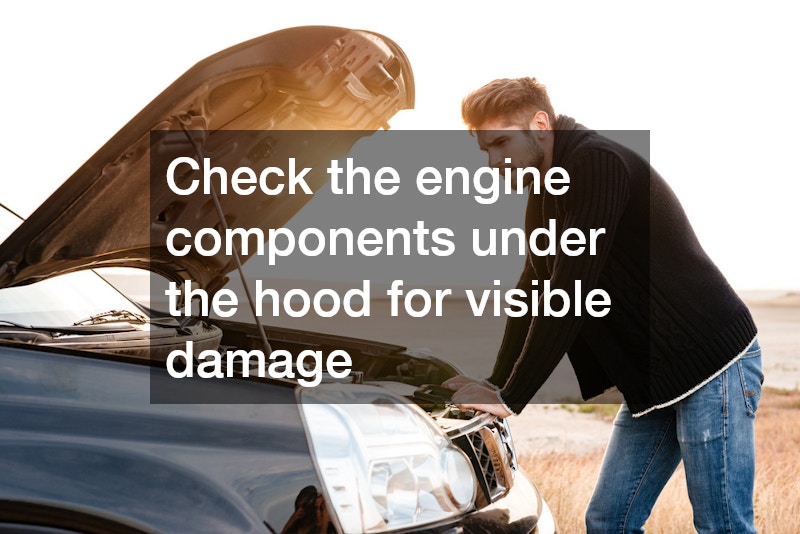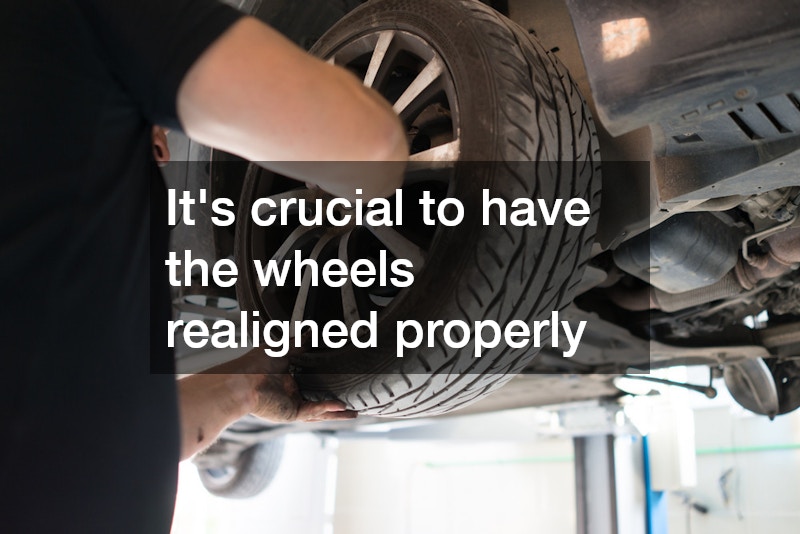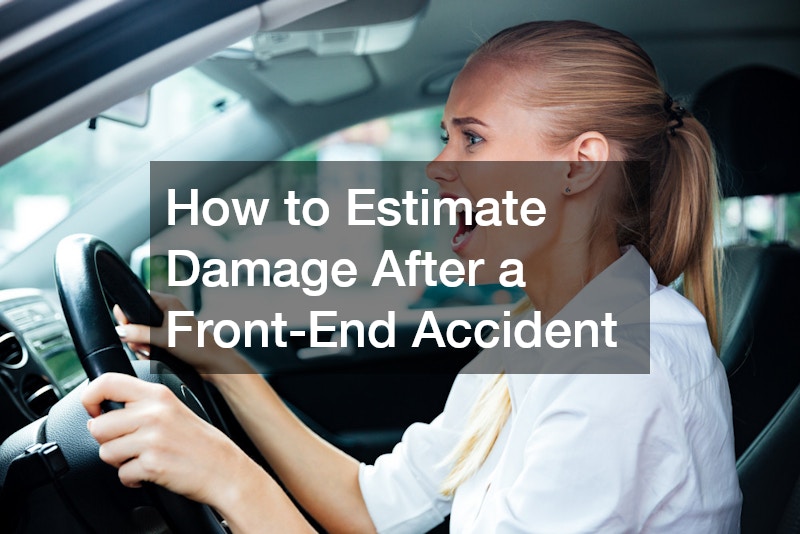A front-end accident can result in significant damage to your car, from cosmetic problems to structural and mechanical issues. It is important to accurately estimate the costs of damage after an accident, both for the safety of your vehicle and for insurance claims. Understanding how to estimate and assess damages will save you time and money, whether you are dealing with simple tire repairs or complex collision repairs. This article will cover the various aspects of estimating damages after a front-end accident.
1. Common Front-End Accident Damages
Front end accidents are characterized by damage to the vehicle’s front, which affects both the aesthetics and the functionality of the car. Impacts can be minor or severe depending on the force and type of collision, as well as the circumstances of the accident.
Bumper Damage
The bumper is your first line of defense in the event of a collision. The bumper is designed to absorb the impact but often gets damaged in the process. Unrepaired bumpers can cause additional problems. They are not only unsightly, but they also look bad.
Headlight and Taillight Issues
Often, front-end collisions result in broken or misaligned lights. It can reduce visibility and make driving dangerous, especially in bad weather or at night. After a collision, replacing or repairing the headlights is essential.
Radiator and Cooling System Impact
Radiator and cooling system are usually located at the front of vehicles. This makes them more vulnerable to an accident. These components may be damaged, leading to an overheating issue that requires immediate attention.
Frame and Structural Damage
Front end accidents can cause structural damage by bending or twisting the frame of the vehicle. It is more common with high-speed collisions, but it can also happen in less serious crashes. Professional auto body repairs are required for frame damage as it could compromise the integrity and safety of the vehicle.
2. DIY Damage Assessment Tips

It’s only natural that you want to check the damage yourself after a front-end accident before visiting an auto body shop. A professional will need to do a thorough examination, but there are some steps you can perform to get an idea of the extent.
Visible Exterior Damage
Examine the exterior of your car. Check for scratches, dents, and cracks on your bumper, headlights, and hood. For minor dents without underlying structural damage, paintless dent removal is an option.
Under-the-Hood Inspection
Check the engine components under the hood for visible damage. Check for any loose or leaking parts, belts that are broken, and fluid leaks. When doing this, be cautious as some damage may not be visible at first and can worsen with time.
Undercarriage Check
Check the undercarriage as well since a collision on the front could have damaged the suspension or drivetrain. Be on the lookout for any signs of wear, bending, or leakage that may indicate a problem.
Listen for Unusual Sounds
Listen carefully to any strange noises, such as knocking or grinding sounds, when you first start your car. These could be signs of internal damage. Strange sounds can indicate deeper mechanical problems, even if your vehicle seems to be drivable.
3. Understanding the Role of Insurance in Damage Estimation
It can be difficult to deal with your insurance company following a front-end accident, but this is a crucial step for getting your car repaired and being fairly compensated.
Filing an Insurance Claim
Understanding what is covered by your auto policy is the first step. After reviewing your policy, you can file a claim. Contact your insurance provider as soon as you can after an accident. Provide them with any information they need, such as photos of the damages and repair estimates.
Insurance Adjuster’s Assessment
You will most likely be sent an adjuster by your insurer to evaluate the damage. The adjuster will assess your car and give you an estimate for the cost of repairs. You should also have your own shop estimate the repair costs, since the estimate from the insurance adjuster may not reflect the total cost.
Negotiating Repair Costs
You may have to negotiate with your insurer if the estimate they provide is lower than you expected. A repair estimate from an auto body shop you trust can be a powerful tool during the negotiation process.
Insurance Pitfalls to Avoid
Avoid common mistakes, like accepting the first insurance offer or not reading your policy’s fine print. If you believe that your insurance company has not handled your claim fairly, a local lawyer can assist.
4. Repair Cost Variability: What to Expect
The cost of repairing a front-end accident depends on many factors, including the extent of damage, type of vehicle, and repair shop.
Factors Influencing Repair Costs
The total cost of repair is influenced by several factors, such as labor rates, part costs, and damage severity. A luxury car will cost more to fix than an economy vehicle due to the high price of parts.
Labor vs. Parts Costs
The cost of labor can be a large part of repairing a vehicle. Labor costs can be more expensive than parts depending on how complex the repair is, particularly when there are frame or electronic problems.
Get estimates from several auto body shops. Prices can vary greatly depending on a shop’s location, reputation and expertise. Ask if the shop is specialized in front-end accident repairs. This can have a significant impact on the quality of work.
Vehicle Make and Model Differences
Your vehicle’s make and model will have a significant impact on the cost of repair. Repairs for a luxury vehicle might require more expensive labor and parts, while those for a standard car are more affordable.
5. When Is an Accident a Total Loss?
The cost of repairing the car after an accident can exceed the actual cash value. This may lead your insurance company to declare it a total loss.
Understanding Total Loss Criteria
The cost of repairing a vehicle exceeds a certain percent of its actual cash worth (ACV). The percentage can vary by state, but it is usually between 75-80%.
Calculating Actual Cash Value (ACV)
The ACV is what your car was worth prior to the accident. The ACV is determined by the age, mileage, and condition of your car. The vehicle could be considered a loss if the repair costs exceed or approach this value.
Factors Influencing the Total Loss Decision
Other factors, such as frame damage or the deployment of airbags, can also influence a decision to declare a vehicle ‘totaled. Total loss is more likely for vehicles with structural damage and malfunctioning safety systems.
Options After a Total Loss
You have several options if your car is declared totaled. You can either accept the settlement offered by your insurer, purchase the totaled vehicle and repair it on your own, or sell it for parts. You can get legal advice from a local attorney to help you sell a totaled vehicle.
6. Addressing Safety Concerns After a Front-End Accident

Repairing front-end collisions can compromise the safety of your car.
Safety Systems and Vehicles
The front of the car is home to many safety features, including airbag sensors, crumple zones, and other systems. A front-end accident can damage these systems, putting your safety at risk.
Airbag Deployment and Repairs
Airbags that are deployed in an accident will need to be replaced. Repairing airbag systems is expensive, but they are essential for the safety of your vehicle in future accidents.
Proper Wheel Alignment
An accident at the front can cause your vehicle to be out of alignment. To avoid uneven tire wear or steering problems, it’s crucial to have the wheels realigned properly. Local tire repair services can assist with this.
Conducting a Post-Repair Safety Check
After your car is repaired, perform a thorough safety inspection to make sure that all systems work properly. You may need to test the brakes and check the alignment.
7. How Front-End Accidents Affect Vehicle Value
Even after repairs are made, a front-end accident can have a significant impact on the value of your car, both in terms of its resale potential and its trade-in value.
Depreciation After Repairs
Depreciation is more rapid for vehicles that have been involved in an accident. Although the severity of an accident and the quality or repairs can play a part, you should expect some value loss following an accident.
Impact on the Resale Value and Trade-in Value
Even if the vehicle has been repaired, most buyers will not offer as much for one that has had a front-end accident. When selling or trading your vehicle, be prepared for the depreciation.
Documenting Repairs
Keep detailed records of all the repairs made to the vehicle if you intend to sell it in the future. This information will reassure potential buyers that the car has been repaired correctly.
Minimizing Value Loss
Investing in quality repairs with OEM parts is one way to reduce value loss. Maintaining the value of your vehicle can be maintained by ensuring that all damage has been properly documented and repaired.
VIN History Reports
VIN reports are a record of any accidents and repairs that a vehicle may have undergone. Your vehicle’s VIN will indicate that your vehicle was involved in an accident after a front-end collision. This can have a negative impact on its resale price.
8. How Technology Can Help with Damage Estimation
The advancements in technology make it easier to assess damage after an accident at the front, allowing for more accurate assessments as well as a faster repair process.
Mobile Apps for Damage Assessment
Drivers can take pictures of their vehicles and get an estimate on the damage. These tools may be convenient, but they shouldn’t replace a professional evaluation.
Computerized Estimation Tools
Most auto body shops use computerized tools for damage assessment. These tools provide more accurate estimates through analyzing data and comparing them to damage on your car.
Advanced Diagnostic Systems
Modern cars are equipped with advanced diagnosis systems, which can alert mechanics of problems that might not be visible at first glance. This ensures that all damage will be addressed properly during repair.
Future Innovations
We can expect even more advances in damage estimation as technology continues to advance. Artificial intelligence and machine-learning could be more important in helping drivers and auto repair shops accurately estimate vehicle damage following an accident.
9. Immediate Steps After a Front-End Accident
Your insurance claim outcome and repair process can be significantly affected by the actions you take after an accident.
Document the Scene
Take pictures of the scene of an accident and any visible damages to your car. These documents will be vital when you file your insurance claim or negotiate with your insurer.
Contact Authorities and Insurance
Report the accident to police, particularly if there were injuries or property damage. Contact your auto insurance provider to start the claim process.
Gather Eyewitness Accounts
Ask for the contact information of any witnesses and a short statement about what they saw. This will be useful in the event of a dispute over who is at fault.
Track All Expenses
Keep detailed records for all expenses incurred, including any medical costs, towing charges, repair receipts and other related costs. This information is essential to your insurance claim as well as local windshield repair.
Estimating damage costs following a front-end accident is a complex process that involves many factors. From visible damage to insurance claims and estimates from repair shops, there are many things to consider. How you navigate through this process will make a big difference in the speed of repair and cost.
